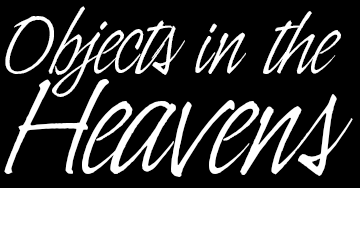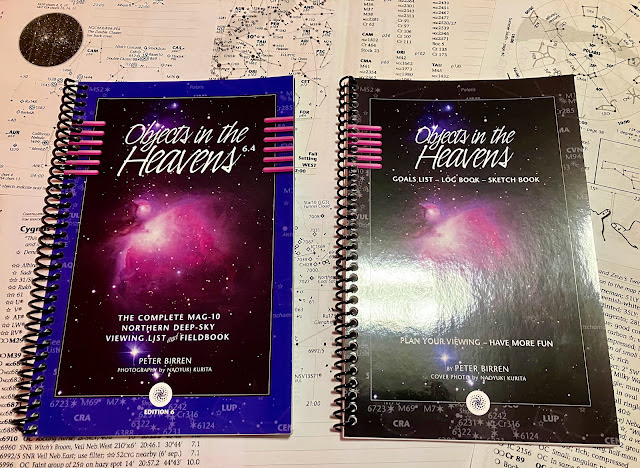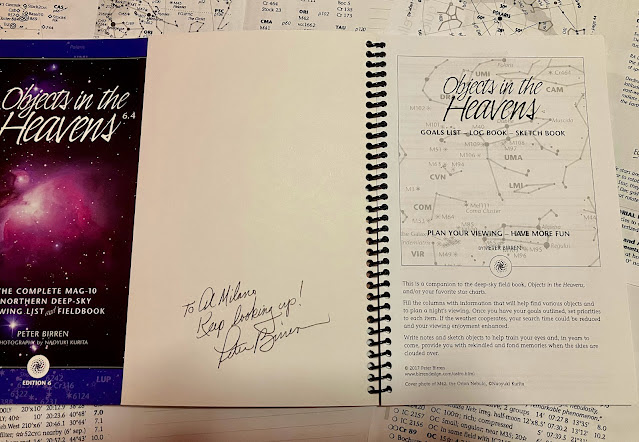


by Al Milano, July 1, 2024, Urban Astronomer in User Reviews
Al's full article (link to site)
I wanted to share some good news about these books I recently came across. It’s just been a long time since I found a book, which is so useful, that I consider it a must have. Now these books have been out and available for quite a while, which makes it even more surprising that I’ve never come across them before. In any case, the main book, entitled 'Objects in the Heavens, The Complete Mag–10 Northern Deep Sky Viewing List and Fieldbook' by Peter Birren.




Dear Peter,
Thank you for your email; and thank you for creating these wonderful resources.
I discovered your work via recommendation on Rony De Laet’s website. I’ve always been impressed with the sketches he’s made with modest instruments. I also enjoy making pencil sketches from binoculars.
Well, it only took a quick glance at the sample pages shown on your site, and I knew I had to have them. I’d purchased a used copy of the book just a little while before.
I took one look at the OITH Goals/Log/Sketch book and I was ordering it that same moment, almost by instinct!
I didn’t know an electronic version was available, so for good measure I just purchased that as well 
It will be convenient to print out one to three pages for a few hours of observing.
I’ll be adding a link to your great stuff on my little blog (shortly) -
I intend on focusing on planetary nebulae more, and would like to know which instrument you’d recommend for this task? Bortle 4.
Thanks again! And best wishes!
Clear skies,
-Al
I received a very nice response; which, in addition to other things, included his recommendation for a telescope to use when chasing planetary nebulae:
"...For planetary nebulae viewing, I’d suggest the largest APO and equatorial you can afford. It’d also work well for AP. A member of the Naperville (IL) Astro. Assn. has done some great PN imaging though I have lost his name to the fog of time, but I recall his awesome setup, especially the mount as being large and very steady."
Well, these days, I can't afford a large Apo refractor but, it's still good to know. It's always good to get advice from a mature and experienced astronomer. I also learned (here on Cloudy Nights) that SCT’s in the larger than 8” size do very well when imaging planetary nebulae.
It looked like I'd found a decent scope for casual observing; on Facebook Marketplace - Of all places! But, I believe the seller was having second thoughts. She may have been under the impression that the telescope is more valuable than it actually is. Well, I can be somewhat fickle myself sometimes, and I changed my mind after all.
In case anyone was wondering: it was, a still new-in-the-box, Edmund Astroscan 2001. Purchased in 1986, made in Japan, and never used. However, while just doing some casual research on it – even though I do know quite a bit about it – I discovered something really interesting about this iconic little telescope.
The primary mirrors, did not start off life as parabolic mirrors. But instead, were spherical/elliptical mirrors, which were then built up “to be parabolic mirrors" using aluminum deposits. Very strange – definitely very unique as well.
And just very recently, another (extremely) experienced amateur astronomer (my friend Scott) gave me some more fascinating information about those little red Astroscans...Which, let's just say isn't very flattering. In any case, that little round red scope still has a cult-like following! They even have a serial number registry in place (forum members of Cloudy nights).
Until next time,
Clear and steady skies!